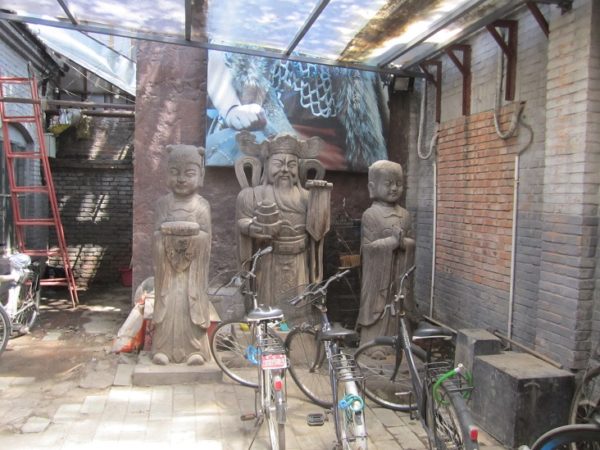There is a video of Nina Simon speaking at the Minnesota History as part of her Art of Relevance book tour early this month. Many things she said jumped out at me and I am going to pass the video along to a couple other people in the hope of starting some conversations.
Around the 47 minute mark she talked about responding to organizational insiders who are dissatisfied by programming that seeks to attract new audiences. She uses the metaphor about going to a restaurant and how you don’t suddenly decide to boycott the restaurant if they start adding vegetarian and heart healthy options to their regular menu. In her particular experience long time insiders complained about interactive programming and community festivals, she pointed out that the new people coming to those events weren’t complaining that the museum was offering programming and opportunities that insiders valued.
When she talked about that, it occurred to me that often resistance to new programming is rooted in the belief that everything should be for oneself. The truth is, everything isn’t for you.
Granted, some times new programs are part of a zero sum equation, especially in a performing arts situation where there are finite resources and dates. A new initiative may displace one of regular events. Instead of 10 things designed for you, you only get nine. For a lot of people even 1/10 of a change can result in them feeling the organization is no longer relevant to them. This may especially be true in the case of subscription holders. That one bad grape in ten ruins the value of the whole package.
In this situation it can be a little tricky to say, that’s okay you don’t need to come to that show, we have other discount configurations that may suit your needs. Not only might your delivery of that message be flawed and sound offensive, but even with perfect delivery, the patron may only hear “that’s okay you don’t need to come.”
Even if the new initiatives are additions and don’t displace any of the current offerings, patrons, donors, board members can still feel the organization is no longer the one they value, despite having lost nothing.
Or at least lost nothing but the desire to keep the delight they feel to themselves. Nina addresses that a couple minutes earlier with the response, wouldn’t you want to share the joy you feel with everyone else? She says even though in their hearts they want to say, “No way!” it is difficult to admit it aloud.
Even though Nina makes it sound easy. Even though she cites examples of people who are excited to see new vibrancy come to the organization they value, it isn’t easy to go against the inertia of thinking that everything that is being done is being done for you.
Regularly reinforcing, gently and diplomatically, of course, the sense that “What We Do, We Do For YOU (collectively)” rather than “for you” (singularly) is important….even though we do want everyone to feel individually invested.
I think Nina’s restaurant metaphor is a useful one. Most of the time restaurants make menu changes and it barely registers notice from people. You can assure people that while it may feel like the organization is metaphorically changing from a steakhouse to a vegetarian restaurant, that isn’t what is happening. Besides, you may find you some of the vegetarian offerings appeal to you.
(As any vegetarian will tell you, if there is a delicious vegetarian option available on a buffet, it will be cleaned out immediately by all the meat-eaters.)








There is another way. The Gewandhaus Leipzig in Germany (concert venue) offers flex- tickets for a small premium. Not an…